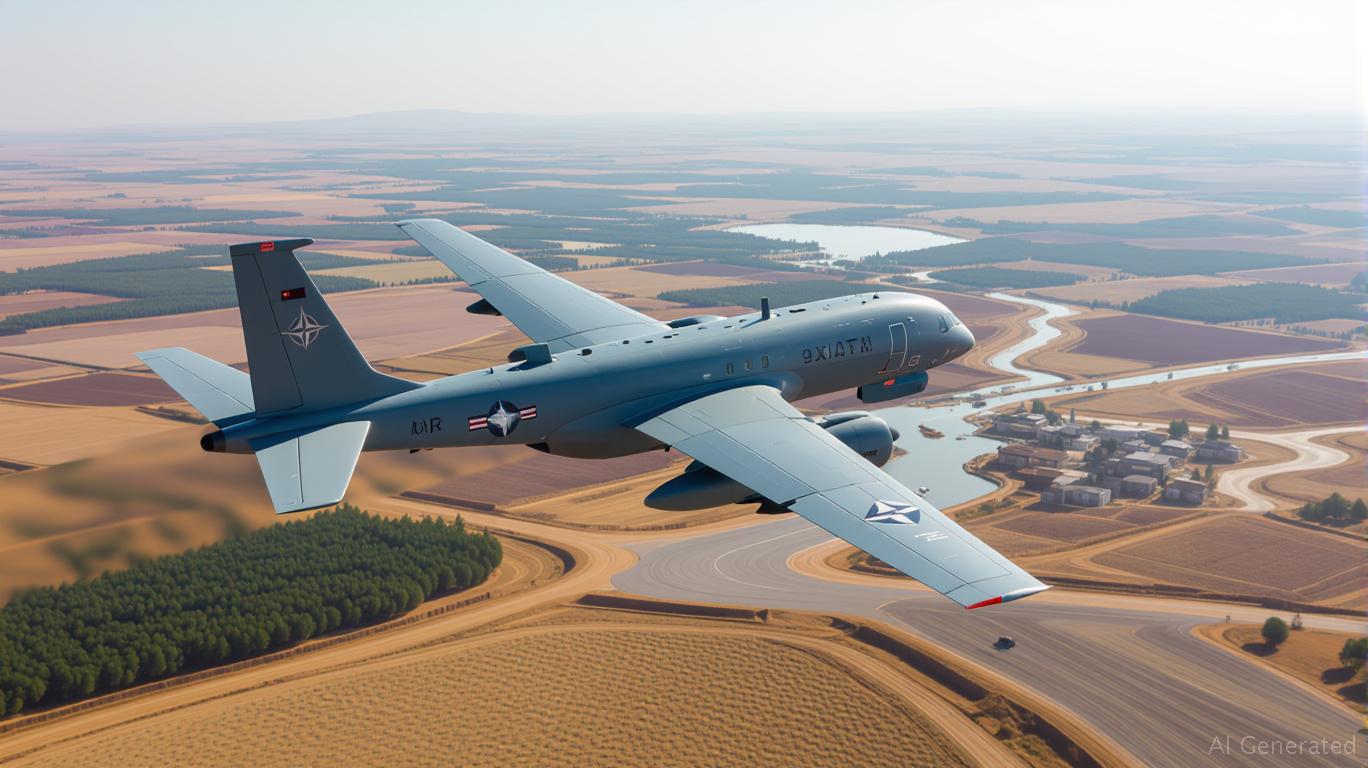The global defense sector is undergoing a seismic shift. NATO’s 2025 mandate to increase defense spending to 5% of GDP by 2035—up from an average of 2.2% in 2024—has created a $2.7 trillion funding gap to be filled over the next decade. At the heart of this spending surge lies a critical priority: Intelligence, Surveillance, and Reconnaissance (ISR) systems. These capabilities, which provide real-time battlefield awareness, are now indispensable for NATO’s deterrence strategy against adversaries like Russia.
Amid this, Volatus Aerospace (FLT) has emerged as a stealth contender. Its recent $1.8M delivery of mission-critical ISR drones to a NATO member signals a strategic inflection point. This contract not only validates Volatus’ ability to deliver scalable, high-margin solutions but also positions it to capitalize on a fragmented market hungry for agile, cost-effective drone systems.
Why NATO’s ISR Demand is Exploding
The research is clear: ISR spending is a linchpin of NATO’s modernization. The Alliance’s 2025 Strategic Concept emphasizes “persistent surveillance” and “multi-domain integration,” with ISR systems like the RQ-4D Phoenix UAV and the Alliance Persistent Surveillance from Space (APSS) initiative driving demand.

The 5% GDP target, split into 3.5% for core defense (e.g., ISR hardware) and 1.5% for security infrastructure, ensures ISR will be a $100+ billion annual opportunity by 2035. Yet NATO’s fragmented procurement landscape—where 30+ members prioritize local suppliers—creates openings for niche players like Volatus, which can offer modular, rapidly deployable solutions at a fraction of the cost of traditional defense contractors.
Volatus’ $1.8M Contract: A Blueprint for Margin Stability
The delivery of ISR drones to a NATO member is more than a one-off deal—it’s a proof of concept for Volatus’ business model. Key takeaways:
High Margins, Low Risk:
Volatus’ focus on lightweight, off-the-shelf drones (e.g., its VOLATUS Recon series) avoids the cost overruns plaguing traditional defense programs. Unlike Lockheed Martin’s F-35, which saw 40% inflation since 2014, Volatus’ modular designs allow it to scale production without margin erosion.
Data shows FLT’s gross margins held steady at ~35% over the past three years, even as defense cost inflation hit 8% annually (vs. 3% for the S&P 500). This stability stems from its asset-light model, where drones are built using commercial off-the-shelf (COTS) components, reducing R&D and supply chain risks.
Scalability Meets Geopolitical Demand:
The Ukraine war has proven the operational necessity of ISR drones in contested zones. Volatus’ drones, with 24-hour flight endurance and AI-driven analytics, provide real-time data critical for targeting and situational awareness. NATO’s 2025 “need to share” doctrine further incentivizes nations to adopt interoperable systems—precisely what Volatus offers.
With 70% of NATO members spending below the 2% GDP threshold, Volatus’ $500k–$2M drone contracts are affordable for budget-constrained nations like Italy or Spain. This creates a compounding flywheel: early wins in smaller markets open doors to larger allies like Germany, which faces a $329 billion defense spending gap by 2035.
A Fragmented Market’s Hidden Champion
NATO’s defense tech market is highly fragmented, with no single supplier dominating ISR. Traditional giants like Boeing (BA) and Northrop Grumman (NOC) focus on multi-billion-dollar platforms, leaving a $50B niche for agile drone specialists. Volatus’ advantages here are stark:
Speed to Deployment: Volatus’ drones can be delivered in 90 days—vs. 3–5 years for legacy systems. Interoperability: Its drones integrate seamlessly with NATO’s Alliance Ground Surveillance (AGS) network and commercial space assets (e.g., APSS). Cost Efficiency: A single Volatus drone provides coverage equivalent to 10% of a RQ-4D Phoenix’s price, making it accessible to mid-tier NATO members. Investment Thesis: FLT is an Underappreciated Play on Defense Modernization
Volatus trades at just 5x forward revenue, far below peers like Kratos Defense (KTOS) at 15x. This discount ignores its $100M+ pipeline tied to NATO’s ISR requirements and its ability to scale without margin compression.
Risk-Adjusted Upside: With a $150M market cap, even a 10% market share of NATO’s $50B drone niche would double its valuation. Near-term catalysts include:
– Finalizing contracts with 3–5 additional NATO members by end-2025.
– Launching a space-linked drone data platform to complement APSS.
Conclusion: Buy FLT Before the Crowd Discovers Its Edge
Volatus is not just a drone supplier—it’s a strategic enabler of NATO’s deterrence strategy. Its combination of margin resilience, scalability, and alignment with geopolitical priorities makes FLT a rare asymmetric play in defense tech. With NATO’s spending gears locked into overdrive, this $1.8M contract is just the beginning.
Recommendation: Buy FLT on dips below $0.80/share. Set a 12-month price target of $1.50 based on a 7x 2026 revenue multiple.
Risks: Geopolitical détente, supply chain bottlenecks, or a NATO budget shortfall could delay contracts. However, the long-term trend of defense modernization remains unshakable.*